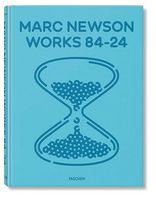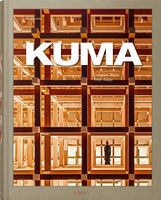Otto Wagner (Basic Art Series 2.0) 89445
Код товару: 89445Паперова книга
-
ISBN9783836564335
-
Бренд
-
Автор
-
СеріяBasic Art Series 2.0
-
Рік2018
-
МоваАнглійська
-
ІлюстраціїКольорові
620 ₴
-
Нова ПоштаБезкоштовно від
3'000,00 ₴ -
УкрпоштаБезкоштовно від
1'000,00 ₴ -
Meest ПоштаБезкоштовно від
3'000,00 ₴
Характеристики
- Бренд
- Автор
- СеріяBasic Art Series 2.0
- КатегоріяКультура та мистецтво
- Рік2018
- Сторінок96
- Формат210х260 мм
- ОбкладинкаТверда
- Тип паперуОфсетний
- МоваАнглійська
- ІлюстраціїКольорові
Анотація
The Pioneer of Viennese Modernism
Discover the groundbreaking structures of Otto Wagner Otto Wagner (1841–1918) is one of the most significant figures of turn-of-the-century architecture. He was associated with the Viennese Secession, a group of artists and designers headed by Gustav Klimt that initiated a departure from the conservative style of the Viennese Kunstlerhaus. Wagner’s visionary approach, described as structural rationalism, pioneered the use of materials such as glass, steel, and especially aluminum to redefine Viennese structural identity.
From the imposing Austrian Postal Savings Bank to the scintillating St. Leopold Church at Steinhof, one of the most important Art Nouveau churches in the world: Discover the breadth of Wagner’s career as well as the political, economic, and social dynamics of his time. This incisive overview features a map locating all of the architect’s most renowned projects and recent, fresh photography from masters like Keiichi Tahara.
“Something impractical cannot be beautiful.”
— Otto Wagner About the series:
Each book in TASCHEN’s Basic Architecture series features:
Discover the groundbreaking structures of Otto Wagner Otto Wagner (1841–1918) is one of the most significant figures of turn-of-the-century architecture. He was associated with the Viennese Secession, a group of artists and designers headed by Gustav Klimt that initiated a departure from the conservative style of the Viennese Kunstlerhaus. Wagner’s visionary approach, described as structural rationalism, pioneered the use of materials such as glass, steel, and especially aluminum to redefine Viennese structural identity.
From the imposing Austrian Postal Savings Bank to the scintillating St. Leopold Church at Steinhof, one of the most important Art Nouveau churches in the world: Discover the breadth of Wagner’s career as well as the political, economic, and social dynamics of his time. This incisive overview features a map locating all of the architect’s most renowned projects and recent, fresh photography from masters like Keiichi Tahara.
“Something impractical cannot be beautiful.”
— Otto Wagner About the series:
Each book in TASCHEN’s Basic Architecture series features:
- an introduction to the life and work of the architect
- the major works in chronological order
- information about the clients, architectural preconditions as well as construction problems and resolutions
- a list of all the selected works and a map indicating the locations of the best and most famous buildings
- approximately 120 illustrations (photographs, sketches, drafts, and plans)

Otto Wagner (Basic Art Series 2.0)
620 ₴





































Відгуки про Otto Wagner (Basic Art Series 2.0)